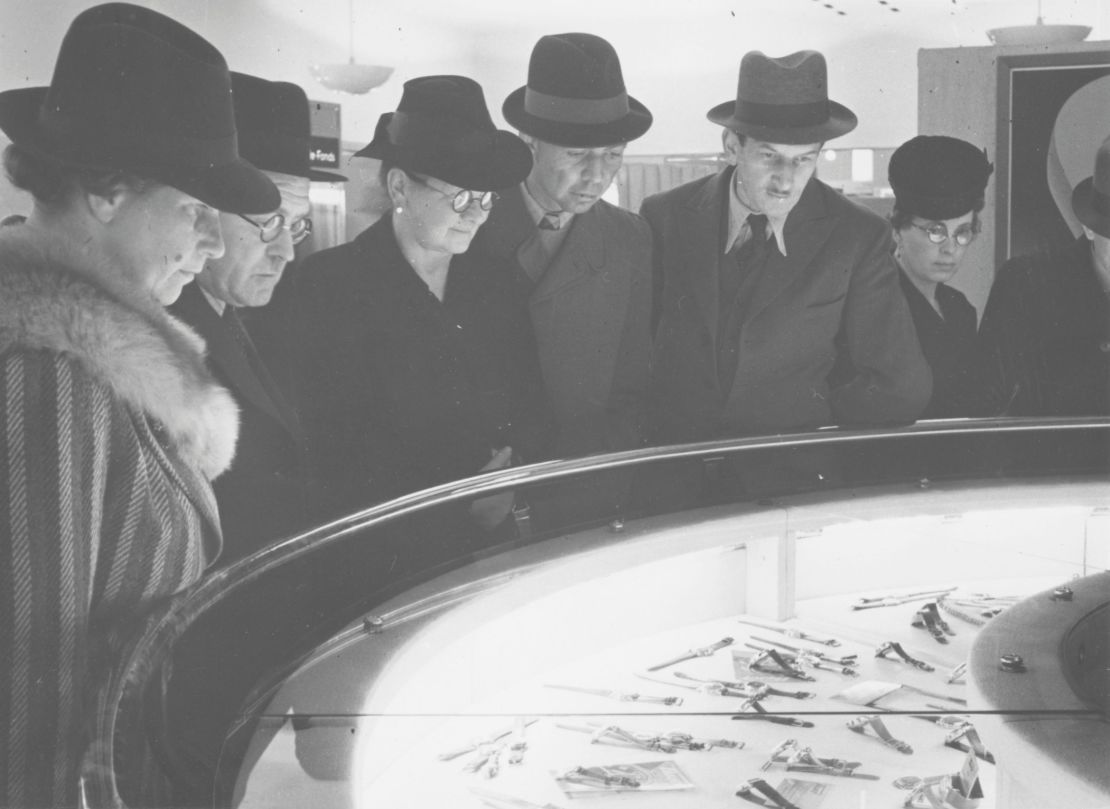Editor’s Note: This is part of a series dedicated to Baselworld 2016. Josh Sims is a freelance writer, watch expert and author of “Icons of Style”.
Story highlights
Baselworld is the global shopping event for watches
80% of watch sales for the year ahead are generated at the fair
Many leading watch brands create extravagant booths
Baselworld may sound like a particularly uninspiring theme park, but is in fact the global shopping event for watches - at least if you’re a retailer.
In Basel, Switzerland, once a year, the owners of watch and jewelery brands – together with the press and a few big time collectors – congregate to see what the horological world has to offer and, if tempted, to sign on the dotted line. A whopping 80% of global watch sales for the year ahead are generated at the fair.

Wear comfortable shoes
Baselworld is big – literally as well as figuratively. And it is strictly for those in comfortable shoes: the show covers some 141,000 square meters of aircraft hanger-sized exhibition halls, each structured according to different sectors and markets, with room for some 1800 exhibitors along their 30km of corridors. There is, for the 150,000 footsore visitors, a lot of walking to be done.
And a lot of spectacle to enjoy. When it comes to their booths, many of the best known brands seek to replicate the sophistication and plushness of their flagship stores; often the same level of security too.
Visiting Baselworld does not mean you get to see every brands’ wares. Although day one of the show coincides with the release of a barrage of press material unveiling the latest watches, access to the stands can be by invitation only, which can be frustrating to watch mad members of the public who – unusually for an industry show – can also buy a ticket.
Highlights from Baselworld 2015
Spectacle and space
Not that these stands are unspectacular from the outside. When, in 1999, a new watch hall was opened, it allowed for three-story stands – which consequently many companies built.
Breitling’s is known for its giant fish tank, Tag Heuer for suspending Formula One racing cars over the deal-making below. Model-esque hosts and flowing champagne are the norm. Small wonder some 20,000 workers and 7,000 lorries pass through Basel to make the eight-day event happen.

Indeed, spectacle is part of the deal. While Baselworld is where fresh ideas in watchmaking and materials are mooted – with competing shows the likes of Geneva’s Salon International de la Haute Horlogerie and London’s Salon QP equally important – the event does not typically offer a plethora of innovation.
Why it matters
“For many of the major players that dominate the show Baselworld is, a few instances aside, more an exercise in marketing,” explains Benoit Mintiens, the founder of boutique brand Ressence and a regular exhibitor.
“That’s important when the entire watch world comes to the show. Even as a small brand that needs to get itself known, there’s no better way than to be at Baselworld. Of course, distributors typically want to note a rookie’s presence at the show for a few years before they will consider buying. Like all trade shows, it’s a bit of a game.”

A centenary of watches
It’s an old game too. Next year Basel will celebrate the centenary of a watch show in the city. A special section for watches and jewelery was first unveiled at the Scnweizer Mustermesse Basel in 1917, although it wasn’t until 1973 that the first dedicated European Watch and Jewellery Show was inaugurated in the city. In 1986 exhibitors from outside Europe were admitted for the first time, making it a global event, and in 2003 this position was underscored by its re-branding as ‘Baselworld’. Remarkably, some agency was no doubt paid a small fortune to come up with that.





























!["Moving into the future, Breitling will continue to value tradition and quality while balancing a growing need for technological integration," Breitling USA President Thierry Prissert tells CNN. "The Exospace B55 Connected is a perfect example of this [because] it places the smartphone at the service of the watch. You can use your smartphone to adjust various functions on the watch including setting the time zone, an alarm or measuring calculations important to pilots such as flight times, block time and mission elapsed time. You can even receive notifications on the watch when you receive text messages, calendar notification, phone calls and e-mails."](https://media.cnn.com/api/v1/images/stellar/prod/160107123034-breitling-3.jpg?q=w_964,h_637,x_0,y_0,c_fill/h_447)









![2016 will be an interesting year for watches, Julien Schaerer, Managing Director of auction powerhouse Antiquorum in Geneva tells CNN. The market continues to grow for exceptional and undervalued [vintage] pieces; there has been tremendous growth on brands such as Heuer, Universal Gene and diving watches in general. "Where sales of conspicuously expensive luxury goods have slowed, the market for Rolex sport models in excellent condition like this iconic Daytona will continue to grow no matter what," says Schaerer, noting the influence of consumers in China and the Middle East.](https://media.cnn.com/api/v1/images/stellar/prod/160107134129-antiquorum.jpg?q=w_1600,h_900,x_0,y_0,c_fill/h_447)